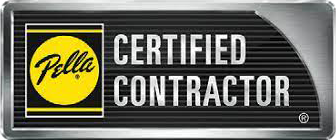 Are you wondering if your roof has storm damage?
Are you wondering if your roof has storm damage?
You are not alone.
Each year after severe weather, we field dozens of phone calls from concerned homeowners and commercial building owners.
We know a thing or two about assessing roof storm damage.
Having served Omaha with local roofing services for over 20 years, we have seen it all.
The purpose of this post is to help you determine whether or not you have roof storm damage.
And if so, what (if anything) you should do about it.
Let’s dive right in.
Here are 17 tell-tale signs that you may have storm damage on your roof.
1. Missing or Storm Damaged Shingles
After a significant wind storm, it’s not uncommon to find shingles missing from your roof.
This is a clear indicator that your roof may have suffered damage.
Missing shingles can be seen from ground level.

You may notice a dark spot on your roof.
This indicates an area where the shingle has torn away exposing the darker asphalt mat below.
In some cases.
The shingles might not be completely gone but could be cracked, dented, or curled—another sign of potential damage.
2. Granules in Gutters
If your gutters are full of granules from your roof’s shingles post-storm, it’s a signal that your roof has suffered storm damage.
The granules on roof shingles protect them from sun damage.
Without them.
The shingles are vulnerable to further weather damage.
During shingle manufacturing, granules are deeply embedded into the shingle surface.
When hail has impacted your roof, granules are knocked loose.
They end up in your gutters.
If you see piles of granules below your downspouts, you may have significant shingle damage that requires attention.
3. Leaks Inside the House
Not all signs are external.
Leaks or damp spots on your ceilings or walls could mean that the storm has damaged your roof enough to let water infiltrate your home.
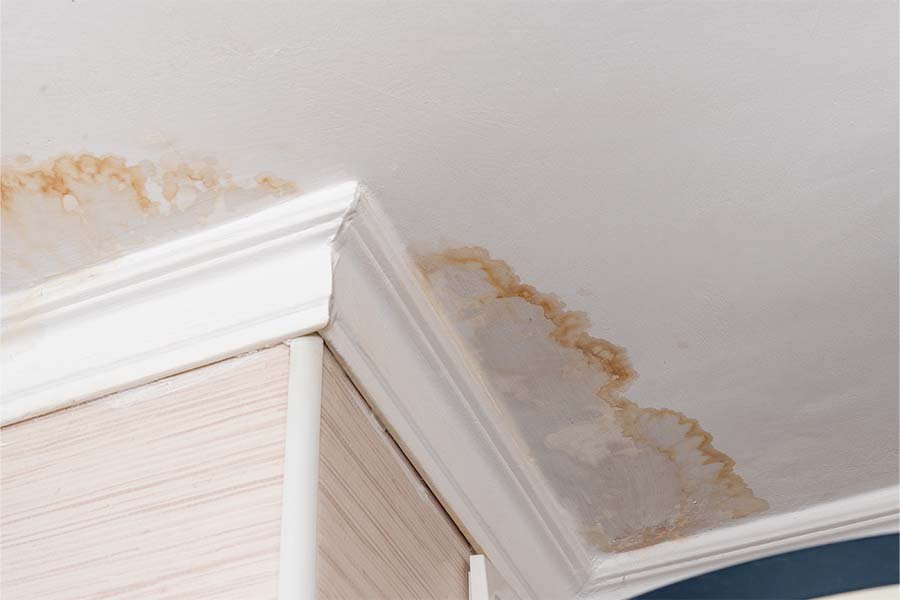
These leaks can present themselves in the form of yellow or brown spots, bubbling paint, drips around light fixtures.
…or even by the sound of dripping water.
Don’t ignore inside leaks.
If you see water spots, you already have other damage, maybe even mold.
4. Hail Damage on Shingles
Hailstorms can leave dents or bruises on your shingles, leading to severe damage.
Hail damage on shingles looks like small dark spots on the shingle surface.
It can be hard to detect from the ground level even to the trained eye.
The problem with hail damage is that your shingle surface granules get displaced.
This reduces the UV protection provided by the granule layer and can cause early deterioration of the shingle.
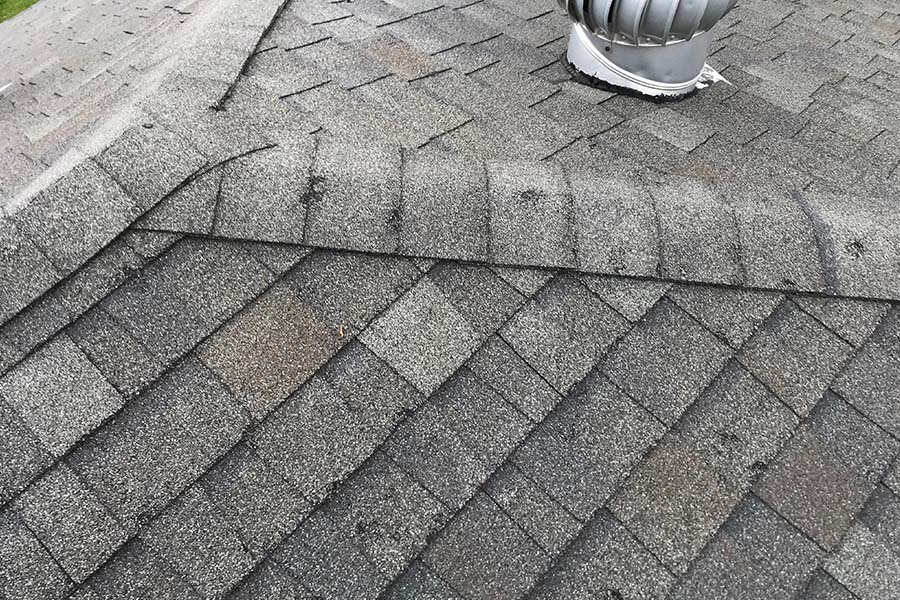
In addition to that.
The shingle likely has subtle tears in the mat. This will certainly lead to leaks over time.
So it’s important to get your roof checked after every hail storm, especially 3/4-inch and above.
5. Damaged Flashing
The flashing around your vents, skylights, or chimney can often suffer from storm damage.
If the flashing is torn or dislodged, your roof is likely damaged.
Separated flashing will cause roof leaks.
Some flashings are flexible while others are constructed of metal and sealants.
Sealant degradation will cause separations which can lead to water infiltration.
6. Clogged Gutters
If the storm was accompanied by heavy debris, your gutters could be clogged.
This is a sign that your roof might have suffered damage and needs an assessment.
Sometime clogged gutters come from tree debris.
Other times they are caused by loose roofing materials that have torn off or slid down into the gutters.

For instance, when clay roof tile gets hit by hail, it sometimes shatters with large pieces becoming stuck in gutters.
An interruption in flow through your gutters can cause water to back up under the shingles and leak into your walls.
7. Tree Damage
If a tree or any large branches have fallen onto your roof, there will likely be significant damage.
This needs immediate attention from a professional.
You may have dislodged roofing materials or even punctures through decking.
A large tree branch may cause structural damage as well.
8. Damaged Roofing Felt or Underlayment
If the storm was severe enough to rip away the shingles and expose the underlying roofing felt, your roof has sustained serious damage.
This requires urgent professional intervention.
Roofing felt or underlayment is your last line of defense on your roof.
It does a great job when securely fastened underneath shingles, tile or metal.
It does not do well to completely seal your roof when fully exposed.
9. Dents on Vents, Gutters, or Other Roof Fixtures
Another quick thing we look for is damage to metals.
If your roof’s fixtures, like vents and gutters, are dented or dislodged, the storm has likely damaged your roof.
Damage to these components usually means your roof has been hit with severe winds or hail.
Soft metal damage is nearly present in all situations where roofing materials have been damaged.
Consider replacing your gutters and other soft metals if you need a roof replacement.
10. Indoor Signs of Roof Damage
Pay close attention to changes to the interior of your property.
Unexplained drafts, daylight visible through the roof, or sagging drywall are all signs that your roof might have sustained damage during a recent storm.
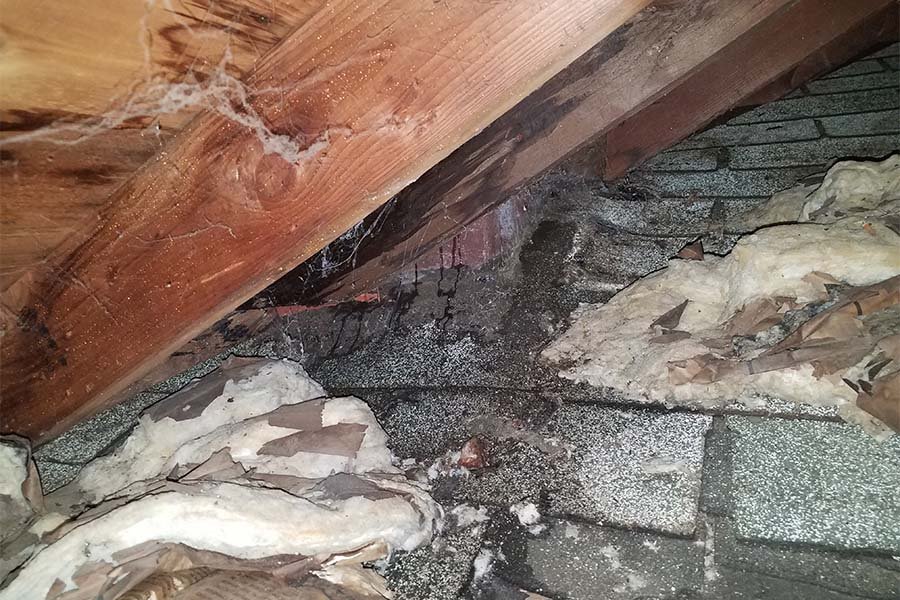
It’s good practice to inspect your attic from time to time to see if you see daylight in any areas.
Sometimes you will notice that you get roof leaks when it rains hard.
Any roof leak is a bad leak, so pay attention if you notice moisture along your walls or ceiling after heavy rain.
11. Damaged Roof Valleys
Roof valleys are crucial for guiding rainwater off your roof.
The see a LOT of water.
If these are missing or damaged, it’s likely the storm has compromised your roof.
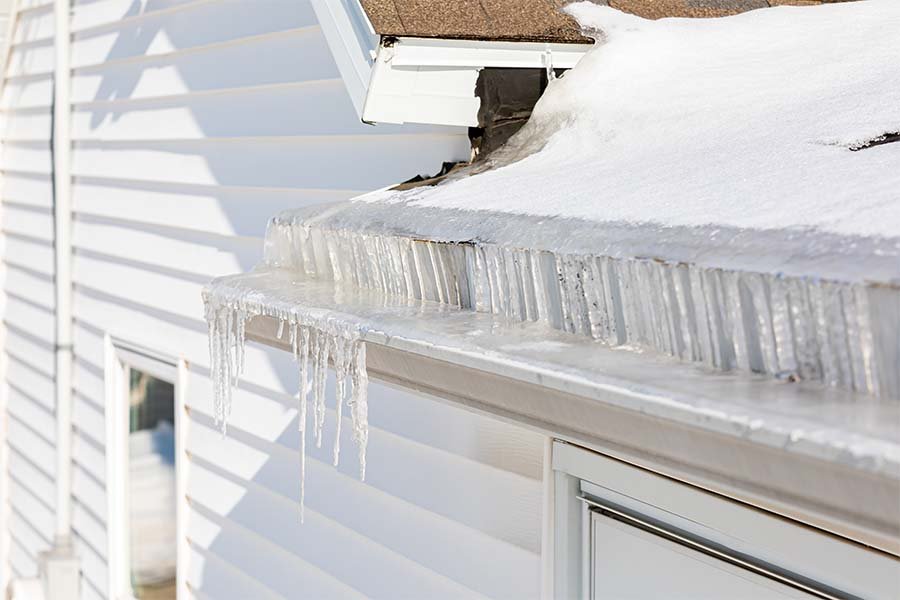
Roof valleys can become damaged by weather or by debris buildup on the roof.
Snow and ice can build up in roof valleys and cause slow moving leaks from ice dams.
12. Peeling or Blistering Exterior Paint
This could be a sign of poor attic ventilation due to roof damage.
Moisture build-up can lead to the peeling or blistering of exterior paint.
You may also have water leaking behind your siding.
This moisture can cause mold or can find its way into your home.
That’s another reason to always get your home’s siding checked by a local contractor whenever you have a roof leak.
13. Higher Energy Bills
A sudden spike in your energy bills may point to roof damage.
A damaged roof may compromise your home’s insulation, leading to a significant increase in heating or cooling costs.
Attic insulation is meant to be dry.

When moisture invades insulation materials, they become wet.
And wet insulation acts like a heat conductor instead of insulator.
If you notice that your utility bills have unexpectedly increase, check your attic insulation.
14. Shingle Pieces on the Ground
Finding pieces of your roof shingles on the ground or around the perimeter of your house is a clear sign of roof damage.
Shingles can be torn from wind.
They can also be knocked loose from hard impact hail hits.
15. Water Damage in the Attic
Check your attic for signs of water damage such as wet insulation, mold, or water stains on the ceiling.
Look at roof rafters and purlins.
Do you see any water stains or signs that moisture discolored the wood?
You may have a small leak into your attic.
16. Electrical Issues During Rain
Electrical issues could be a result of leaks from a damaged roof, allowing water to infiltrate your home and potentially come in contact with wires.
Sometimes water will find its way into circuit breakers.
You may also notice flickering ceiling lights which could be caused by water contact.
If you notice any electrical problems that could be related to water damage, it’s important to get your roof checked out right away.
17. Sagging Roof Deck
While some variation in the line of your roof is normal.
If you notice extensive sagging areas or dips in the roof deck, this may be a sign of significant damage.
Your roof should not be sagging.
A solid and secure roof deck will provide a great foundation for roofing materials.

If you notice a sagging roof deck, you may have serious roof leaks that are deteriorating decking materials.
In Conclusion
If you observe any of these signs, it’s critical that you contact a professional roofing company to give you a thorough roof inspection.
Early detection can save you from dealing with costlier issues in the future.
If you suspect that your Omaha roof has suffered storm damage, don’t hesitate to reach out to a roofer in Omaha for a comprehensive assessment and appropriate repair solutions.
We serve homeowners and commercial building owners in Omaha and across the state of Nebraska with professional, reliable Omaha roofing services as well as gutters, siding, windows & doors, and more.
This topic is covered in more depth in a blog post titled: 17 Tell-tale Signs Your Roof May Have Storm Damage Infographic.




